Homemade Pho
Few dishes evoke comfort and soulfulness quite like a steaming bowl of homemade pho. This Vietnamese classic isn’t just a meal—it’s a slow-simmered expression of care, patience, and culinary heritage.
From the deep richness of roasted beef bones and charred aromatics to the delicate notes of star anise and cinnamon wafting through the air, pho is both grounding and transcendent. Preparing pho at home invites you into a ritual of layering flavors, skimming, tasting, and waiting—until a broth emerges that’s clear, nourishing, and quietly complex.
Whether served with tender beef, fresh herbs, or just a handful of crunchy bean sprouts, this bowl of pho becomes a personalized experience steeped in tradition and warmth.
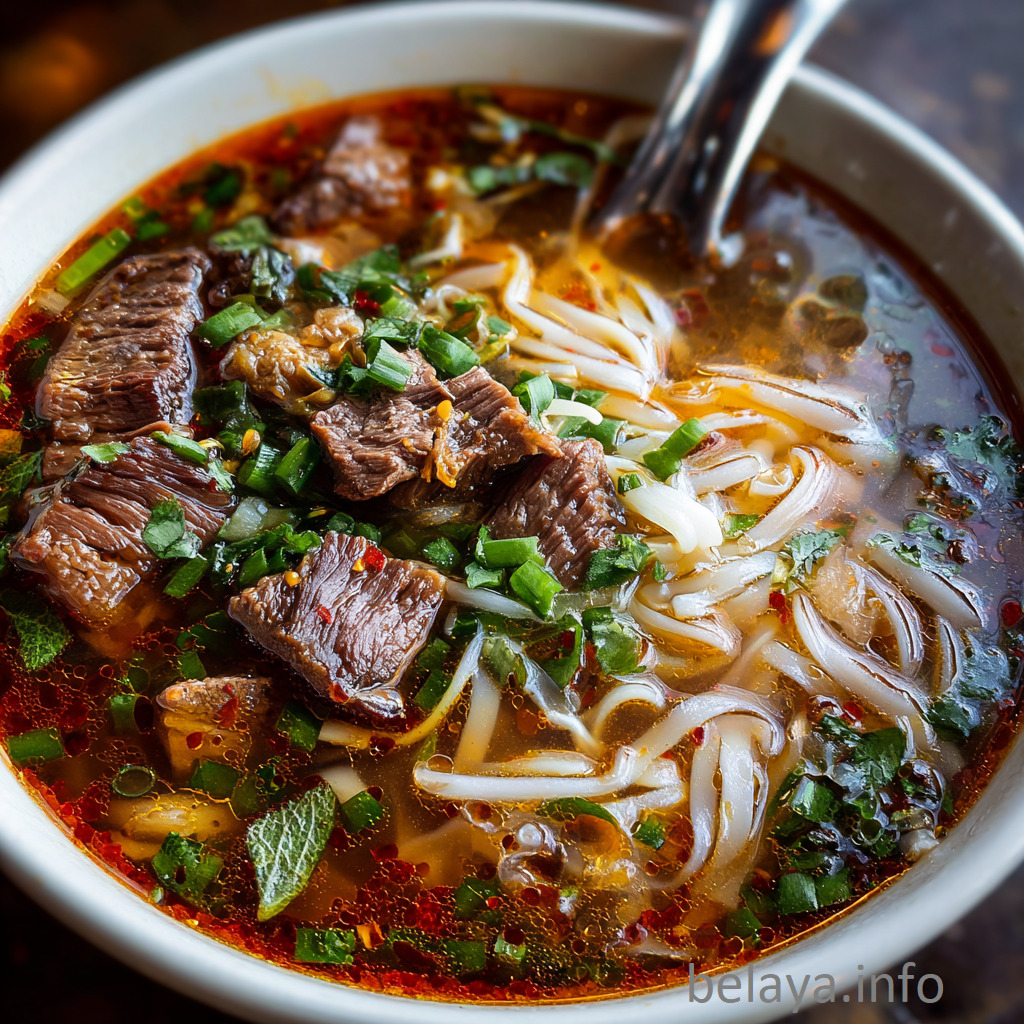
Why People Will Love Homemade Pho:
Richly Layered Broth: The slow-simmered bone broth, infused with spices like star anise, cinnamon, and clove, offers a depth of flavor that is both warming and profoundly satisfying.
Therapeutic Aroma & Taste: The gentle fragrance of charred ginger, roasted onion, and toasted spices makes every spoonful a sensory journey—soothing, aromatic, and restorative.
Customizable & Comforting: Whether served with rice noodles, oxtail, brisket, shrimp, or simply bean sprouts and herbs, pho can be tailored to personal cravings while always delivering comfort.
Cultural Soul Food: This is more than just soup—it’s a traditional Vietnamese dish made with time, care, and intention. Every bowl tells a story of patience and heritage.
Perfect Balance of Fresh and Rich: With its contrast of warm, fatty broth and cool garnishes like Thai basil, lime, and chili, pho delivers a harmonious balance of flavors and textures that feels nourishing and complete.
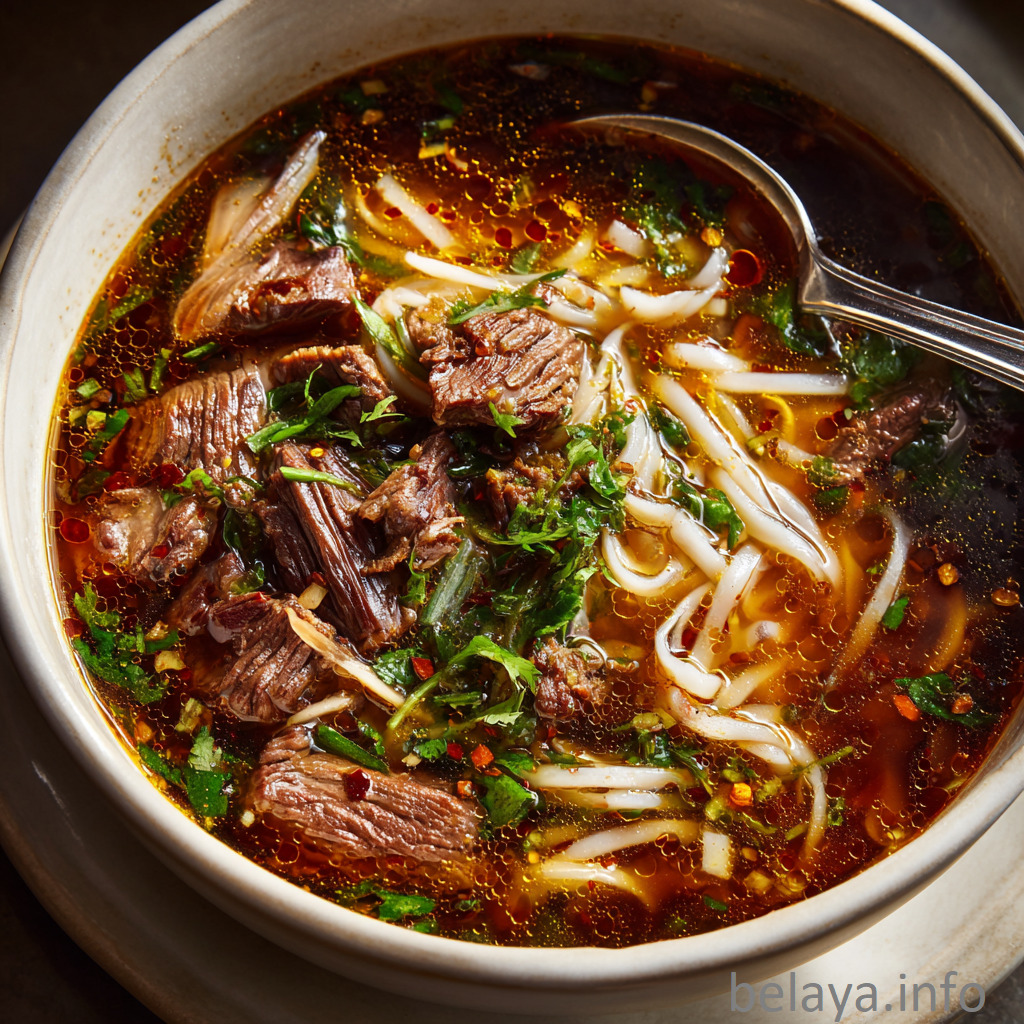
Key Ingredients:
Beef Bones & Oxtail: These form the foundation of the broth, slowly releasing collagen, marrow, and deep umami to create a silky, nutrient-rich base full of body and soul.
Charred Onion & Ginger: Roasting these aromatics unlocks their natural sweetness and smokiness, adding a gentle warmth that anchors the broth’s depth with subtle complexity.
Fragrant Spices (Star Anise, Clove, Cinnamon, Cardamom): These essential pho spices are toasted to bloom their oils, weaving sweet, spicy, and earthy notes into every sip.
Fish Sauce, Salt, and Sugar (or Monkfruit): These seasonings bring essential balance—salty, sweet, and savory—fine-tuned to heighten each layer of flavor without overpowering the natural broth.
Fresh Garnishes: Thai basil, bean sprouts, cilantro, chili, and lime offer a burst of brightness and crunch, contrasting beautifully with the richness of the broth for a complete sensory experience.
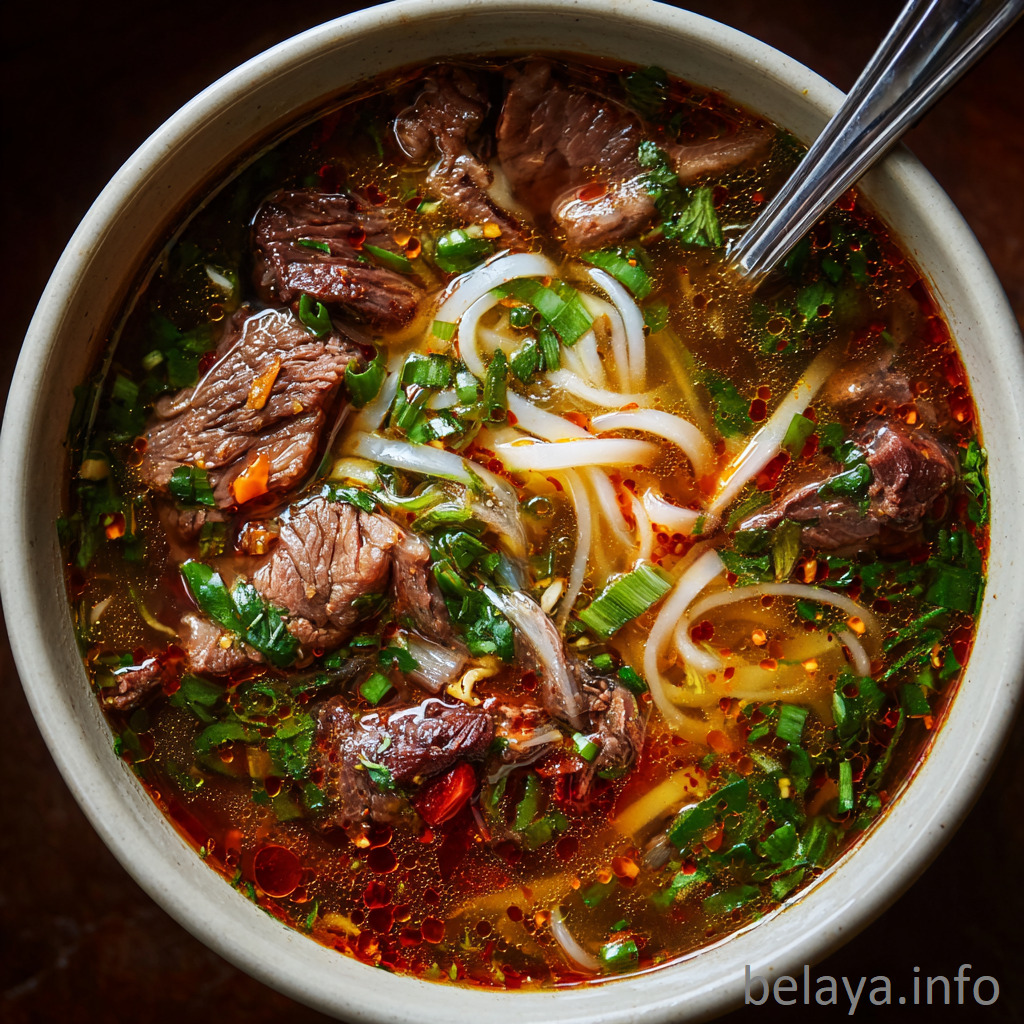
Expert Tips:
Blanch the Bones First: Always begin by blanching the beef bones and oxtail in boiling water for 5–10 minutes, then rinse thoroughly. This crucial step removes blood, impurities, and excess fat that would otherwise cloud the broth, ensuring a crystal-clear result.
Char Your Aromatics Properly: Deeply char the onion and ginger until they develop blackened edges. This not only enhances the broth with subtle smokiness but also mimics the flavor of street-side pho found in Vietnam.
Toast the Spices Gently: Dry-toast your whole spices—especially star anise, cinnamon, cloves, coriander seeds, and cardamom—just until fragrant. This activates essential oils, intensifying aroma without making the broth bitter.
Simmer Low and Slow (Never Boil): Once you bring your broth to a boil, immediately reduce to a low simmer. A rolling boil can emulsify fat and create murkiness. A gentle simmer over 3–6+ hours builds flavor clarity and body without compromising purity.
Strain with Care: When the broth is done, strain through a fine mesh sieve or cheesecloth to remove all solids and sediment. This is key to achieving that pristine, amber-toned pho broth that looks as elegant as it tastes.
Balance is Personal: Start light with salt and sweetener (monkfruit or sugar), then taste and adjust in the last hour. The broth should feel round and satisfying, not overtly salty or sweet. Consider seasoning in layers during cooking.
Reheat with Respect: If serving later, reheat broth gently—not to a boil—so the subtle spice notes don’t dissipate. Always warm garnishes and protein separately to preserve their texture and freshness.
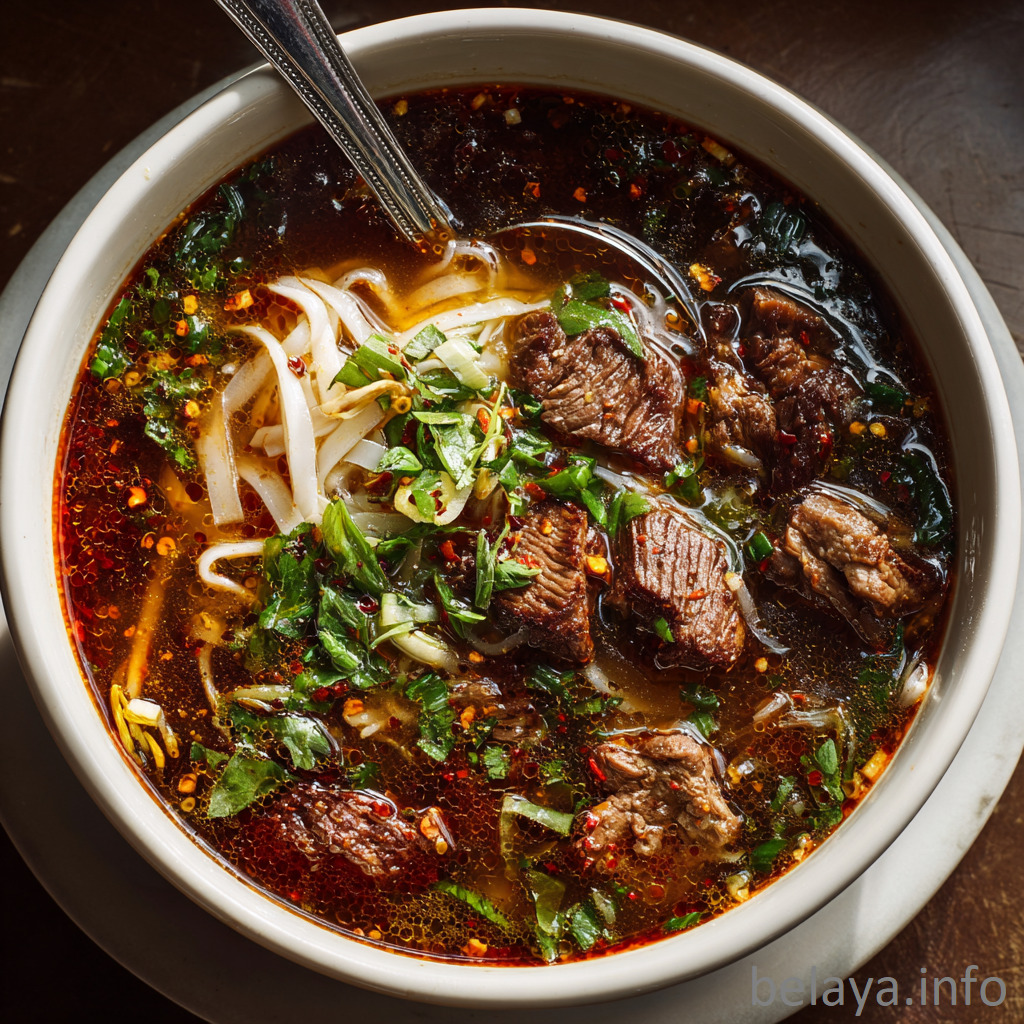
Homemade Pho
Ingredients:
Broth:
Beef bones
Ox tail
Ginger
Onion
Star anise
Cardamom
Cloves
Cinnamons sticks
Coriander seeds
Fennel seeds
Sugar or substitute ( I used monkfruit)
Salt (I used mushroom seasoning contains salt also)
Instructions:
1. For the broth I begin with boiling the beef bones and ox tail for 5-10 min. Then I rinse it out with cold water and place back into pot of new water and place on high to beginning cooking. ( you will see scum and impurities in the first boil)
2. Then on the stove top I will halve and onion and ginger and cook it for approximately 5-10 minutes to get that aroma coming and charr and add it to the pot.
3. The next step is to cook the star anise (I use 1 – strong flavor for me), cardamom (a few pods), cloves (a few), and cinnamon sticks (1-2) on the stove stop, for a few minutes to get that aroma coming out. Then you will place in a cheesecloth, tie and place into pot.
4. Once pot comes to boil you will want to lower to simmer. Depending on the amount you will be making the salt and sugar will vary. Always start with 1-2 tablespoons as you can continually add or add at the end to your taste.
5. The pot will continue to simmer for a few hours. At least 3. But I have come to learn the longer it is, it tastes so much better.
6. You can continue to check on it as you will see scum float to the top. You can easily remove that with a spoon or ladle.
7. Once completed, remove cheesecloth, ginger, onion bones and ox tail. Strain broth through a mesh strainer into a clean pot.
8. Add oxtail back into broth and taste to liking. Add additional sugar and salt depending on taste.
Fillings: Everything is optional depending on what you like. For this bowl, I did not eat it with rice noodles but more of the bean sprouts for that crunch.
Beef
Shrimp
Meatball
Rice noodles
Thai basil
Bean sprouts
Onion slices
Cilantro
Chili peppers
Chili oil
Lime
Hoisin
Sriracha
Fried minced garlic
Sometimes when I am low on time. I put it in a pressure cooker for at least an hour and walk away.
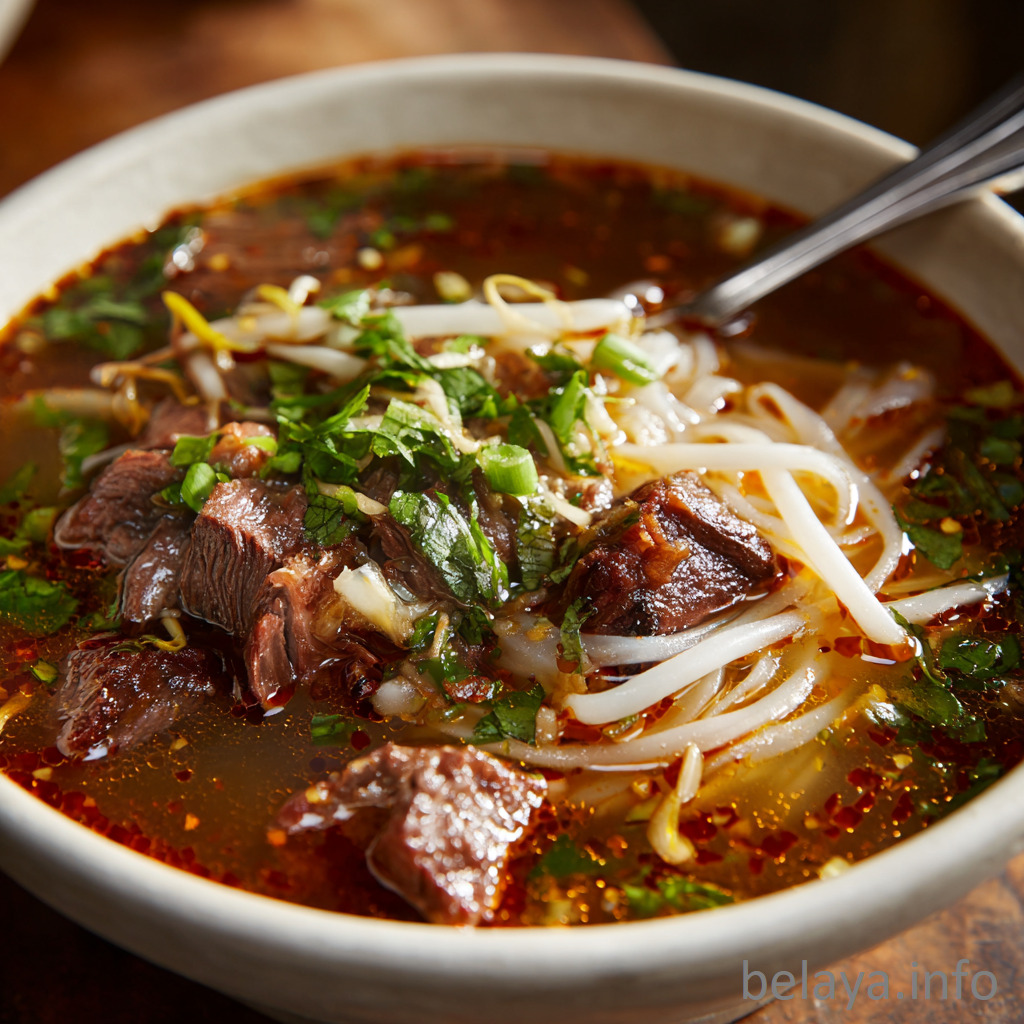
Important Notes When Making Homemade Pho:
Clarity of Broth Reflects Care: The hallmark of exceptional pho is a clear, golden broth. Achieving this depends on three things: properly blanching the bones, never boiling after the initial boil, and consistently skimming impurities. Cloudy broth often signals rushed or inattentive technique.
Time Equals Depth: While pressure cookers are useful for convenience, traditional pho broth develops its soulful flavor from a slow simmer over several hours. The long extraction coaxes gelatin from bones and layers of warmth from charred aromatics and toasted spices.
Spice Restraint is a Virtue: Don’t overdo the spices. Star anise, cinnamon, cloves, and cardamom are potent—using too much can overpower the broth. Stick to modest amounts and remember that pho is about subtlety and balance, not intensity.
Salt & Sugar Are Seasoning Anchors: These two ingredients are the silent sculptors of flavor in pho. Use mushroom seasoning or salt carefully, and monkfruit or sugar with intention. Pho should have a naturally savory body with a faint touch of sweetness—never feel sugary or flat.
Garnish Is Not Just Decoration: Fresh herbs like Thai basil, bean sprouts, and lime slices aren’t just toppings—they’re structural to the dish. They provide brightness, crunch, and contrast to the deep, warm broth. Let diners customize, but provide variety.
Oxtail Isn’t Just for Broth: After simmering, the oxtail can be shredded and added back to the bowl. Its gelatin-rich meat is tender, flavorful, and luxurious—making it one of the most prized parts of pho.
Don’t Skip the Charred Aromatics: Charring ginger and onion is not optional. That smokiness and mellow sweetness they contribute are central to what makes pho distinct from other broths.
Noodle Texture Matters: Rice noodles should be soft but not mushy. Prepare them separately and rinse briefly to stop cooking and prevent sticking. Overcooked noodles can ruin even the best broth.
Tips:
Straining the Broth: After removing bones and aromatics, strain the broth through a fine mesh strainer to ensure a smooth texture without any solid bits.
Storage: Pho broth can be refrigerated for up to a week or frozen for longer storage. Make sure to cool it completely before freezing.
Serving: Serve pho hot with all the garnishes and toppings on the side so everyone can customize their bowl to their liking.
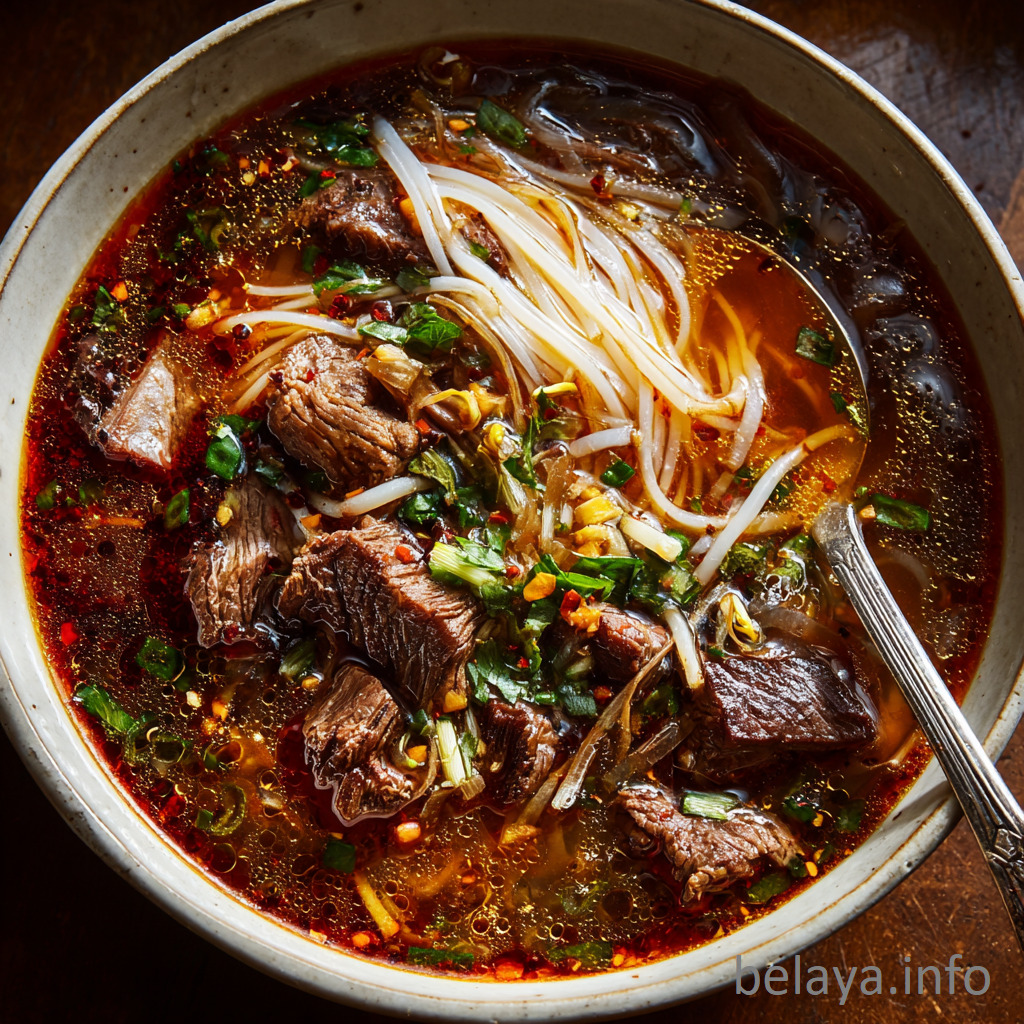
How To Enjoy Homemade Pho After Cooking:
1. Prepare the Table for Customization
Pho is not just a soup—it’s an experience. Lay out all the garnishes and condiments so everyone can build their perfect bowl. Include:
- Bean sprouts (fresh and crunchy)
- Thai basil (whole leaves, torn just before adding)
- Lime wedges (to brighten the broth)
- Sliced chili peppers (for those who love heat)
- Sriracha and hoisin sauce (for dipping or swirling in)
- Fried garlic or shallots (for added umami and crunch)
2. Assemble Each Bowl Thoughtfully
Start with the noodles: Place a small handful of pre-soaked or cooked rice noodles at the bottom of each bowl.
Layer the proteins: Add thinly sliced rare beef, cooked oxtail, shrimp, or meatballs, depending on your selection.
Add onion and herbs: Scatter sliced onions and fresh cilantro on top for aroma and texture.
Ladle the hot broth: Pour the steaming broth over everything—this cooks thin raw beef slices instantly and warms the bowl beautifully.
3. Garnish and Taste Before Adjusting
Add sprouts and basil right before eating—they should stay crisp.
Squeeze in fresh lime to lift the flavor.
Taste the broth first before adding sauces.
If needed, swirl in a small amount of hoisin for sweetness or Sriracha for spice—but avoid overpowering the delicate broth.
4. Sip, Slurp, and Pause
Sip the broth slowly—it’s the heart of the dish and should be enjoyed mindfully.
Slurp the noodles to aerate and enhance the aroma.
Alternate between spoonfuls of broth and bites of noodles, herbs, and meat.
Use chopsticks and a soup spoon for the authentic pho-eating experience.
5. For Leftovers
Store leftover broth separately from noodles and garnishes.
Reheat the broth gently on the stove to preserve its depth.
Freshen up with new herbs and garnishes before serving again.

Nutrition Information:
For one serving of Homemade Pho (broth with oxtail, herbs, and rice noodles, excluding sauces and optional toppings like hoisin or sriracha):
Calories: 325 kcal | Total Fat: 12.5 g | Saturated Fat: 4.1 g | Monounsaturated Fat: 5.7 g | Polyunsaturated Fat: 1.2 g | Cholesterol: 55 mg | Sodium: 550–700 mg (depending on seasoning and added sauces) | Total Carbohydrates: 28 g | Dietary Fiber: 2.1 g | Sugars: 3.2 g | Protein: 24 g

Frequently Asked Questions:
What’s the secret to achieving a clear, flavorful pho broth?
The key is parboiling the bones before making the broth. Boil the beef bones and oxtail for 5–10 minutes, then discard the water and rinse the bones to remove impurities. This step reduces scum and results in a clearer, cleaner-tasting broth.
Can I make pho in a pressure cooker or Instant Pot?
Yes! A pressure cooker significantly reduces cook time while still extracting rich flavor from the bones and spices. Cook on high pressure for at least 60–90 minutes and allow natural release for best results. You’ll get deep flavor in a fraction of the time.
What kind of bones are best for making pho broth?
A combination works best. Use marrow-rich beef bones (like knuckles or femur) for body and oxtail or meaty bones for flavor. Oxtail adds gelatin and richness, contributing to that silky mouthfeel pho is famous for.
How do I balance the sweet and salty elements of the broth?
Start with 1–2 tablespoons of sugar and salt, then adjust to taste during the final simmering stage. Add more sugar (or monkfruit substitute) if you want a slightly sweeter broth. Salt, mushroom seasoning, or fish sauce can fine-tune the savory profile.
Can I freeze the pho broth for later use?
Absolutely. Pho broth freezes very well. Let it cool completely, then store in airtight containers or freezer bags. It keeps for up to 3 months. Just thaw, reheat, and add fresh toppings and noodles when ready to serve.
Do I need to roast or char the onion and ginger before adding them to the broth?
Yes, charring the onion and ginger is essential for depth of flavor and aroma. This step mimics the smoky character found in traditional pho and balances the sweetness of the broth. You can char them directly over a flame, in a dry skillet, or under the broiler until darkened and aromatic.
Why use a spice sachet or cheesecloth for the aromatics?
Using a cheesecloth or spice sachet helps contain small, loose spices like cloves, coriander, and fennel seeds, making it easier to remove them after cooking. This ensures a smooth, clear broth without unwanted grit or overpowering spice flavors.
How long should I simmer the broth, and why does time matter?
Pho broth should simmer for at least 3 hours, but the flavor improves with longer cooking—6 to 8 hours is ideal. The extended time helps extract collagen, minerals, and umami from the bones and aromatics, creating a richer and more complex broth.
What can I do if the broth ends up too fatty or greasy?
You can skim the fat while simmering using a ladle, or chill the finished broth in the fridge and remove the solidified fat layer from the top before reheating. Keeping some fat is desirable for flavor, but too much can overpower the broth.
Can I make pho ahead of time or in large batches?
Absolutely. Pho is perfect for meal prep or large batches. The broth can be made ahead and stored in the refrigerator for up to 5 days, or frozen for up to 3 months. Keep the broth and toppings separate, and assemble fresh bowls when ready to serve.